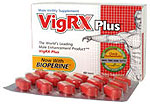Bargain Reviews
- 4 likesBest-Selling Male Enhancement Supplement All OverI prioritize sleep as it plays a crucial role in my weight management and overall health. Natural Medicine ... (02/05/2024 16:54:57)
- 2 likesGet the best deals on quality timber floors.Ongoing maintenance plans to extend the lifespan of your roof and prevent costly repairs. roofing company surrey ... (02/05/2024 15:52:57)
- 0 likesLake Macquarie Roof Replacement Group - Caves BeachCompliance with industry standards and regulations for quality assurance. roofing company surrey ... (02/05/2024 15:51:19)
- 0 likesRoof Gutter Cleaning servicesWe comply with industry standards and regulations to ensure quality assurance. roofing company surrey ... (02/05/2024 15:51:06)
What are the different types of knife gate valves?
What are the different types of knife gate valves?
There are several different types of knife gate valves, each with its own unique characteristics and features. Some of the most common types include:Get more news about through conduit gate valve,you can vist our website!
Conventional Knife Gate Valve: Designed with a simple gate or wedge-shaped disk that moves up and down to open or close the flow of material. Also known as a traditional knife gate valve.
Bonneted Knife Gate Valve: Features a bonnet (a removable cover), which is typically secured to the valve body by a number of bolts. Used to protect the internal components of the valve from damage and wear.
Through Conduit Knife Gate Valve: Its gate passes through the body of the valve, rather than being located on one side of the valve. Allows for a larger flow area and less pressure drop.
Push-Through Knife Gate Valve: Its gate is pushed through the valve body to open or close the flow of material. Its design helps prevent blockages.
Severe Service Knife Gate Valve: Specifically designed to withstand high pressure, extreme temperatures, high flow rates, and heavy debris. Typically made from high-grade, corrosion-resistant materials.
Rising Stem Knife Gate Valve: Features a stem that rises and lowers as the valve is opened and closed.
Non-Rising Stem Knife Gate Valve: Its stem does not move in relation to the valve body and is instead connected to a hand wheel or an actuator.
Wafer Knife Gate Valve: Has a typically smaller and thinner body meant to be installed between two pipe flanges.
It is important to note that some knife gate valves are also classified based on the material they are made of, such as cast or ductile iron, stainless steel, and others, each of them having different suitability for certain applications.
What are the parts of a knife gate valve?
A knife gate valve typically has the following parts:
Gate: A disk-shaped component that moves up and down within the valve body to open or close the flow of material.
Body: The main component that holds the valve’s internal parts together, and also serves as the conduit through which the material flows.
Seats: The surfaces that the gate comes into contact with when the valve is closed, which helps to form a tight seal.
Bolts: Typically found on the outside of the valve body and are used to clamp the two halves of the valve body together.
Packing: A set of seals that are used to prevent leakage around the stem and gate.
Gland: The component that holds the packing in place around the stem, providing a seal to prevent leakage.
Stem: The part that connects the gate to the hand wheel or actuator and is used to raise and lower the gate within the valve body.
Yoke: A large, U-shaped piece mounted to the top of the valve body and connects the stem to the gate.
Stem Nut: A nut-shaped component that is typically located at the top of the stem and is used to secure the stem to the hand wheel or actuator.
Hand Wheel or Actuator: A component used to open and close the valve. It can be operated by manual hand wheel, pneumatic, hydraulic, electric, and electro-hydraulic actuators.  Until 31/08/2023 00:00:00
Until 31/08/2023 00:00:00 
There are several different types of knife gate valves, each with its own unique characteristics and features. Some of the most common types include:Get more news about through conduit gate valve,you can vist our website!
Conventional Knife Gate Valve: Designed with a simple gate or wedge-shaped disk that moves up and down to open or close the flow of material. Also known as a traditional knife gate valve.
Bonneted Knife Gate Valve: Features a bonnet (a removable cover), which is typically secured to the valve body by a number of bolts. Used to protect the internal components of the valve from damage and wear.
Through Conduit Knife Gate Valve: Its gate passes through the body of the valve, rather than being located on one side of the valve. Allows for a larger flow area and less pressure drop.
Push-Through Knife Gate Valve: Its gate is pushed through the valve body to open or close the flow of material. Its design helps prevent blockages.
Severe Service Knife Gate Valve: Specifically designed to withstand high pressure, extreme temperatures, high flow rates, and heavy debris. Typically made from high-grade, corrosion-resistant materials.
Rising Stem Knife Gate Valve: Features a stem that rises and lowers as the valve is opened and closed.
Non-Rising Stem Knife Gate Valve: Its stem does not move in relation to the valve body and is instead connected to a hand wheel or an actuator.
Wafer Knife Gate Valve: Has a typically smaller and thinner body meant to be installed between two pipe flanges.
It is important to note that some knife gate valves are also classified based on the material they are made of, such as cast or ductile iron, stainless steel, and others, each of them having different suitability for certain applications.
What are the parts of a knife gate valve?
A knife gate valve typically has the following parts:
Gate: A disk-shaped component that moves up and down within the valve body to open or close the flow of material.
Body: The main component that holds the valve’s internal parts together, and also serves as the conduit through which the material flows.
Seats: The surfaces that the gate comes into contact with when the valve is closed, which helps to form a tight seal.
Bolts: Typically found on the outside of the valve body and are used to clamp the two halves of the valve body together.
Packing: A set of seals that are used to prevent leakage around the stem and gate.
Gland: The component that holds the packing in place around the stem, providing a seal to prevent leakage.
Stem: The part that connects the gate to the hand wheel or actuator and is used to raise and lower the gate within the valve body.
Yoke: A large, U-shaped piece mounted to the top of the valve body and connects the stem to the gate.
Stem Nut: A nut-shaped component that is typically located at the top of the stem and is used to secure the stem to the hand wheel or actuator.
Hand Wheel or Actuator: A component used to open and close the valve. It can be operated by manual hand wheel, pneumatic, hydraulic, electric, and electro-hydraulic actuators.
qocsuing 275 days ago






 Deals Facebook
Deals Facebook Google plus
Google plus Deals Twitter
Deals Twitter
Share this bargain with your friends: